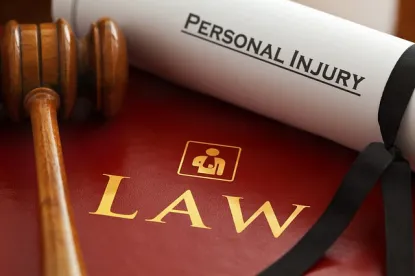I Wasn’t Wearing A Helmet, Can I Still Bring A Motorcycle Accident Claim?
The nature and extent of a motorcyclist’s injuries following an accident are typically very severe. In fact, according to the National Highway Transportation Safety Administration, motorcyclists are nearly five times more likely to be killed in an accident than people who are riding in a car.
While a variety of factors play into why motorcycle accidents are often so serious, the main reason is that motorcycles do not offer any protection to riders. Thus, if a motorcyclist is hit from any direction, they will almost certainly be knocked off the bike and onto the ground, where they are at great risk of being run over by another motorist.
Wearing a Helmet Can Reduce the Chances of Serious Injury Following a Motorcycle Accident
Helmets have long been known to significantly reduce the risk of injury or death in a motorcycle accident. Because of their effectiveness, 49 states – as well as Guam, the Northern Mariana Islands, Puerto Rico, and the U.S. Virgin Islands – have laws requiring motorcyclists to wear helmets. States vary in their approach, with 28 states requiring only certain types of riders wear helmets, typically riders under the age of 18. The only state that does not have a helmet law is New Hampshire.
Of course, regardless of a state law requiring the use of helmets, all motorcyclists should wear a helmet anytime they get onto a bike.
But when they do not, are they still allowed to pursue a personal injury case against another driver?
In most cases, the answer is yes. However, states vary in their approach when it comes to helmet non-use evidence or, as it is frequently referred to, the helmet defense. In theory, there are three general approaches that a state could take regarding the helmet defense.
1: Prohibiting the helmet defense altogether:
Some states do not allow a defendant in a motorcycle accident lawsuit to bring up any evidence suggesting that the plaintiff was not wearing a helmet. The rationale behind this approach is often borrowed from other cases involving an accident victim’s failure to wear a seatbelt. Thus, if a state has already decided that defendants in car accident cases cannot bring up an accident victim’s failure to wear a seatbelt, chances are that the state will apply the same logic to helmet non-use evidence.
2: Allowing a defendant to raise the helmet defense to reduce an accident victim’s damages:
The majority of states allow a defendant to introduce a plaintiff’s failure to wear a helmet to help the jury determine the appropriate amount of damages. In some ways, this approach makes sense because, while not wearing a helmet will not prevent an accident, it can potentially mitigate an accident victim’s injuries.
Of course, many states that allow the helmet defense in the damages phase of a personal injury trial require the defendant to prove that the plaintiff’s injuries would not have been as serious had they been wearing a helmet. In other words, if a motorcycle accident victim suffered broken bones as a result of the accident, but no head injuries, the victim’s failure to wear a helmet would not likely be relevant.
Those states that have adopted this approach will typically allow the jury to apportion fault between all parties involved, including the accident victim. Depending on state law, an accident victim can generally recover for their injuries, provided they are less than 50 or 51 percent at fault. However, the court will reduce the accident victim’s damages award by their percentage of fault.
For example, assume a plaintiff sustains serious head injuries and broken bones in a motorcycle accident. The jury finds that the plaintiff suffered $1,000,000 in damages but also finds that he was 30 percent responsible for his own injuries. In this case, the plaintiff would be able to recover $700,000.
3: Allowing a defendant to argue the helmet defense in both the liability and damages phases:
This approach is the rarest, and for a good reason. A motorcyclist’s failure to wear a helmet does nothing to contribute to the accident happening in the first place. In fact, in many states, adult riders are under no legal obligation to wear a helmet at all. Thus, allowing a defendant to argue that the plaintiff’s injuries would not have happened had they been wearing a helmet is counterintuitive and, to a large degree, defies logic.




 />i
/>i

